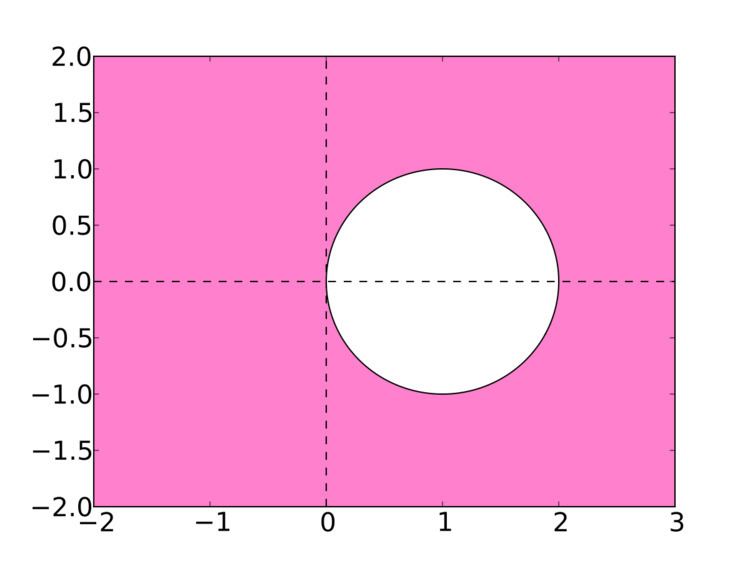 | ||
In numerical analysis and scientific computing, the backward Euler method (or implicit Euler method) is one of the most basic numerical methods for the solution of ordinary differential equations. It is similar to the (standard) Euler method, but differs in that it is an implicit method. The backward Euler method has order one and is A-stable.
Contents
Description
Consider the ordinary differential equation
with initial value
The backward Euler method computes the approximations using
This differs from the (forward) Euler method in that the latter uses
The backward Euler method is an implicit method: the new approximation
If this sequence converges (within a given tolerance), then the method takes its limit as the new approximation
Alternatively, one can use (some modification of) the Newton–Raphson method to solve the algebraic equation.
Derivation
Integrating the differential equation
Now approximate the integral on the right by the right-hand rectangle method (with one rectangle):
Finally, use that
The same reasoning leads to the (standard) Euler method if the left-hand rectangle rule is used instead of the right-hand one.
Analysis
The backward Euler method has order one. This means that the local truncation error (defined as the error made in one step) is
The region of absolute stability for the backward Euler method is the complement in the complex plane of the disk with radius 1 centered at 1, depicted in the figure. This includes the whole left half of the complex plane, so the backward Euler method is A-stable, making it suitable for the solution of stiff equations. In fact, the backward Euler method is even L-stable.
Extensions and modifications
The backward Euler method is a variant of the (forward) Euler method. Other variants are the semi-implicit Euler method and the exponential Euler method.
The backward Euler method can be seen as a Runge–Kutta method with one stage, described by the Butcher tableau:
The backward Euler method can also be seen as a linear multistep method with one step. It is the first method of the family of Adams–Moulton methods, and also of the family of backward differentiation formulas.
